It’s not surprising that the are a global icon, attracting almost half of the annual tourism visitation to the Great Barrier Reef. Unparalleled in natural beauty and with more than 70 islands that are largely isolated, this region is a mecca for sailing, diving and snorkelling. But it’s not just tourists that flock to the Whitsundays.
The Whitsunday islands are a sanctuary for vulnerable species of the Great Barrier Reef and a migration path and birthing ground for whales, turtles and dugongs. Beneath the azure waters this region is known for, are the unsung heroes of this ocean habitat: seagrass meadows. The ongoing restoration of these meadows is crucial to the islands, connected reefs and supporting ecosystems as they harbour life, filter water and protect our coastlines.
Following the launch of the in the Whitsundays in early 2020, the Foundation has been working closely with the local Reef community, including Ngaro Traditional Owners, Reef managers, and tourism operators, to establish a pilot seagrass nursery to support the restoration of local seagrass meadows. This nursery had great success and saw excellent growth that underpins the Reef Islands Initiative’s ambition to upscale the nursery and to have greater impact across the Whitsundays.
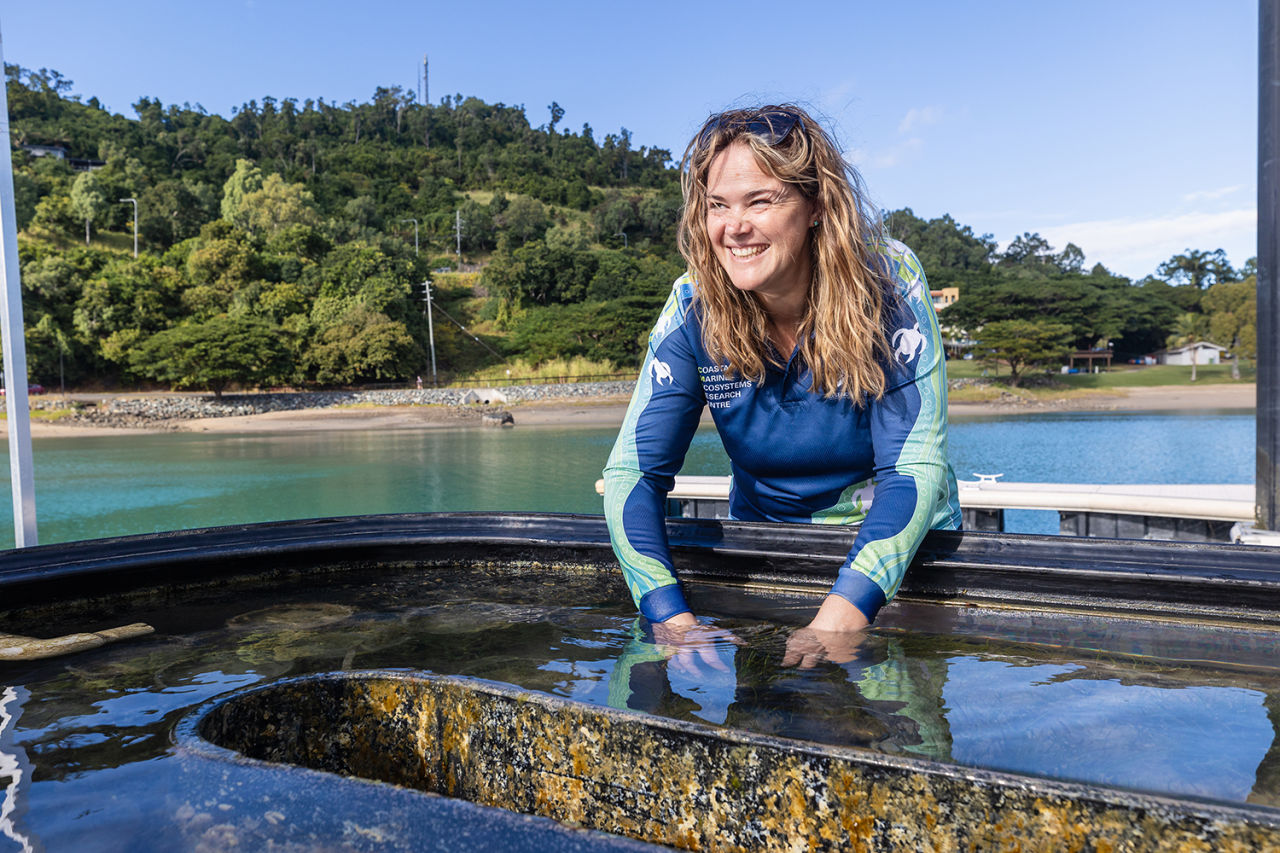
Central Queensland University research assistant, Nicole Rosser, tends to the seagrass nursery.
#Why is seagrass important?
Seagrasses are unique in that they represent the only flowering plants that can live entirely in the sea. Seagrasses are considered critical habitats that provide a long list of ecosystem services and benefits to humans. They are important nursery and foraging habitat for fish and shellfish. They cycle nutrients and oxygenate the water. They prevent coastal erosion and capture carbon. They have been shown to remove harmful pathogens, pollutants and microplastics from the waters that flow around them, keeping our coastal ecosystem healthy. They are also very important for dugong and turtle feeding grounds.
Seagrass restoration projects across the Great Barrier Reef are working to improve ocean health across the wider ecosystem while also helping the meadows recover from recurring major events like cyclones.
Seagrass meadows are important feeding grounds for turtles and dugongs.
#A success story for seagrass
A pilot seagrass nursery in the Whitsundays has already seen great success since it was built and installed at the Coral Sea Marina early in 2022. Delivered through the Whitsundays Reef Islands Initiative, this project is focussed on collecting, cultivating, storing and germinating seagrass seeds to enhance the seagrass meadows in nearby Pioneer Bay.
Working closely alongside Central Queensland University, Reef Catchments and Ngaro Traditional Owner trainees, this Great Barrier Reef Foundation program has been working to develop better methods for seagrass mariculture and seed-based seagrass meadow rehabilitation.
In its infancy, the nursery was established by collecting local seagrass and their flowers from Pioneer Bay. The nursery is working to grow a healthy stock of seagrass to produce a local seed bank without the need to rely on community flower collections. This bank will be used for seed-based restoration and as a security measure to rehabilitate degraded pockets of seagrass in the event of a cyclone.
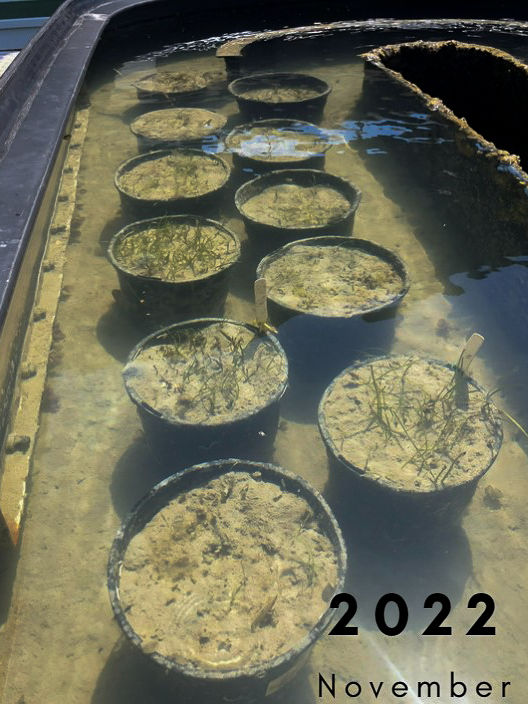
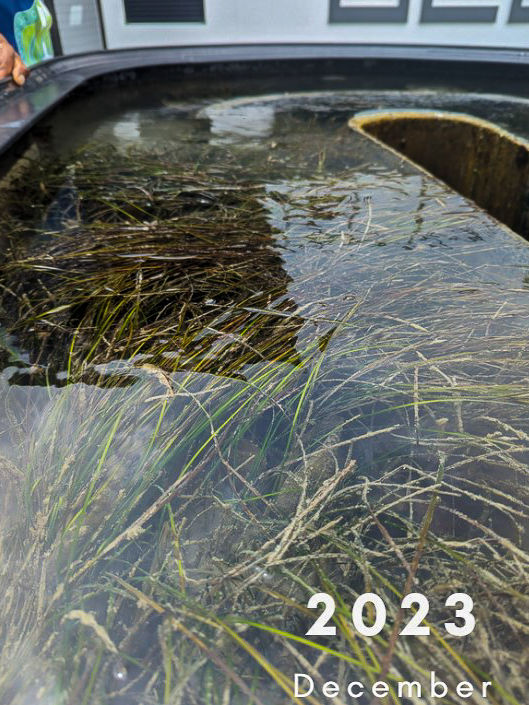
The nursery has had excellent growth since 2022. Credit: Cass Hayward – Reef Catchments.
A prototype seagrass nursery designed for this program has been one of the most successful at growing seagrass across the Great Barrier Reef. This filtration system pumps in sea water, introducing small marine animals to the tank, while also allowing the water to circulate. Both the animals and the flow within the tank are believed to limit algae build up and promote better seagrass growth. The Ngaro trainees have found the blue-spotted sea hare (Bursatella leachi) particularly fascinating and they’ve minimised cleaning of the sides of the tanks to maintain the potentially beneficial relationship between these small creatures and seagrass.
At Pioneer Bay, seagrass reseeding trials have been conducted to identify the best method for rehabilitating a four-hectare meadow. The methods tested involve direct injection of the seed into the ground, hand/drone dispersal which scatters seeds on the surface and seed ‘balls’ that group seeds in a pre-fertilised bundle. The community will have the opportunity to get involved in reseeding efforts in the future.
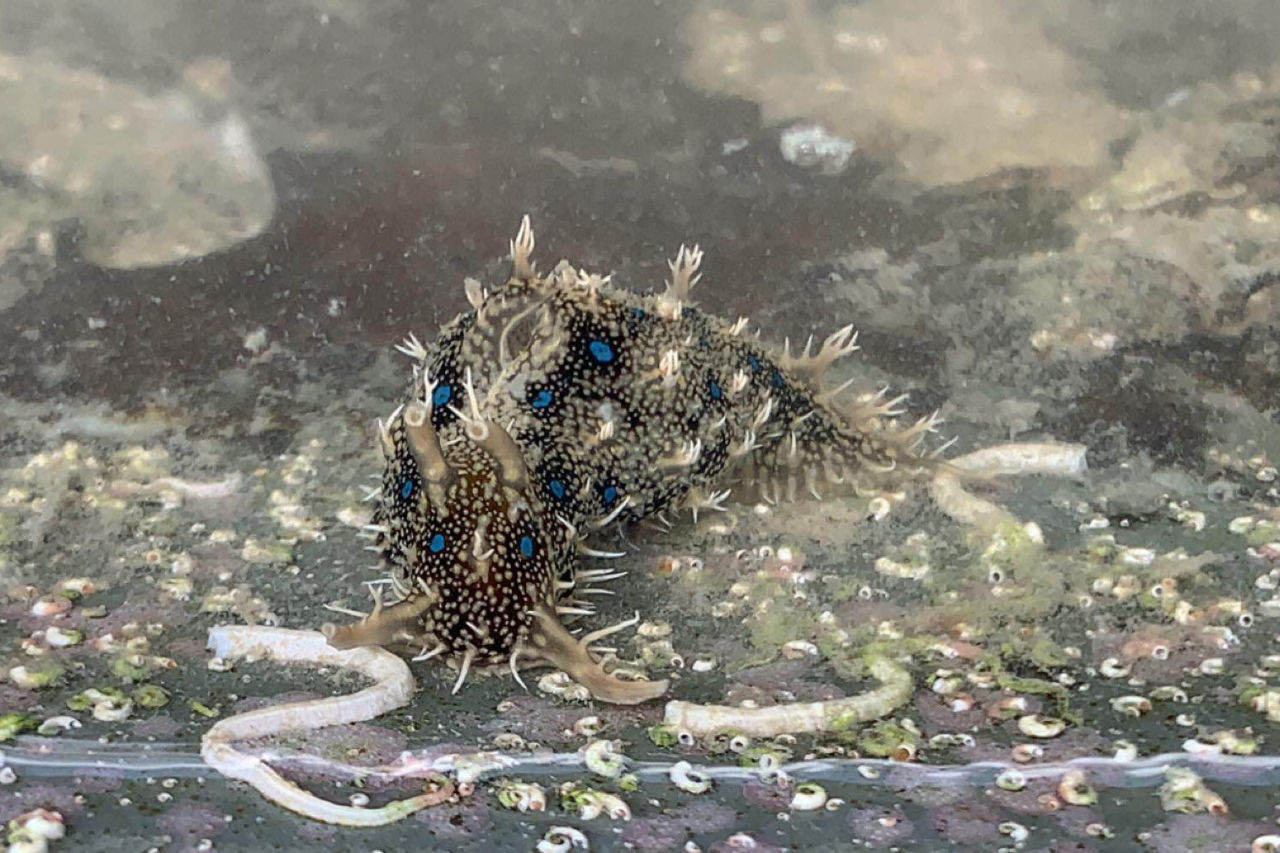
Blue-spotted sea may have a beneficial relationship with the seagrass. Credit: Nicole Rosser.
#Upscaling seagrass restoration across the Whitsundays
The Great Barrier Reef Foundation is working with Central Queensland University to upscale the Whitsundays nursery. This upgrade will triple the nursery’s capacity to include three seagrass tanks and two flower collection tanks to increase the number of plant stock, not just for Pioneer Bay but across the wider Whitsundays region. The upscaled nursery will be ready by June 2024 in time for the next flowering season.
The nursery will become a long-term asset for ongoing Central Queensland University research, public education and fieldwork. The learnings from the pilot nursery design are now being applied to other Central Queensland University nursery systems. This is an exciting result and a testament to the collaborative efforts of the team.
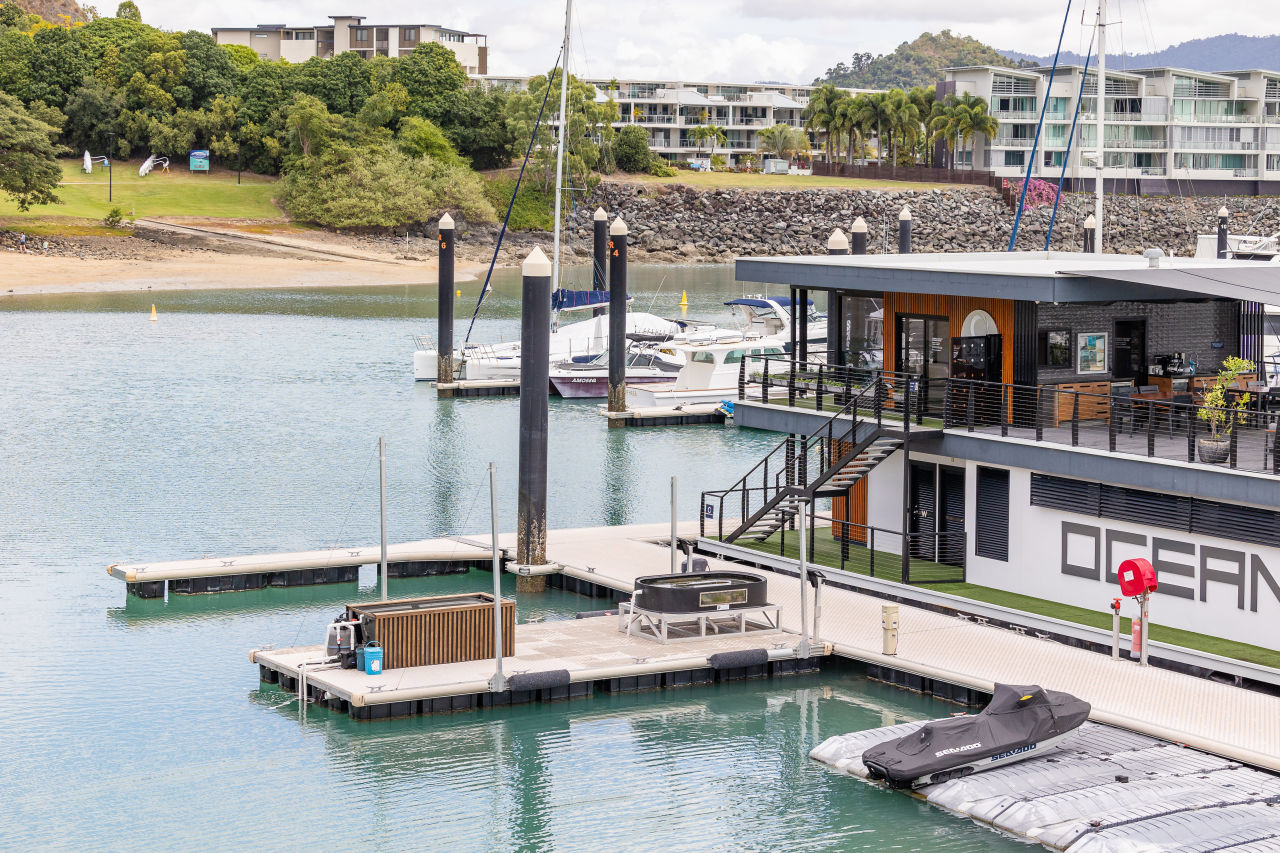
The current seagrass nursery will be upgraded to triple the nursery’s capacity.
The Reef Islands Initiative is focussed on establishing a network of climate change refuges to protect critical habitats on the Great Barrier Reef Islands. The initiative has been designed to deliver a collaborative program of on-ground and in-water actions that protect and restore critical island values for wildlife and reef communities in the face of a changing climate. This seagrass restoration project is being delivered through the Whitsundays Reef Islands Initiative, a Great Barrier Reef Foundation program, supported by funding from Lendlease, The Australian Government’s Reef Trust, the Queensland Government and the Fitzgerald Family Foundation.








